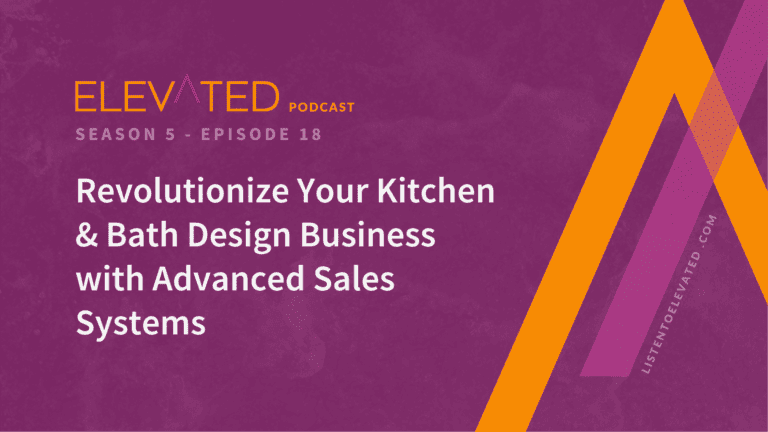Revolutionize Your Kitchen & Bath Design Business with Advanced Sales Systems

In this episode, we’re highlighting one of the remarkable capabilities of Integrated Sales System, particularly their role in tracking client and prospect interactions.
The Power of Tracking with Integrated Sales Systems
As we get into this some of you might think this sounds a bit “Big Brother-ish.” You aren’t wrong, but tracking and using information about interactions allows you to consistently provide an exceptional experience, even before prospects decide to become paying clients.
You see, when going through the sales process without using these capabilities of a fully integrated sales system, it often feels like we’re shooting in the dark. We’re left guessing – Did they open our email? Did they look at our website? Are they aware of our services and capabilities? What exactly are they looking for?
A fully integrated sales system eliminates the guesswork and hassle. It enables us to track and monitor where prospects are interacting with our brand. This, in turn, empowers us to serve up the right information at the right time. The value of it is that no touchpoint stands alone; everything is interconnected.
Think about it. When a potential client is considering a service, they’re likely scouring numerous platforms, from websites to Instagram to email. They might download a resource, make a phone call, or send a text. Without insights into their interactions across these different channels, we’re only seeing part of the puzzle, and it is hard to interpret their intentions.
Enhancing Customer Journey Through Seamless Integration
Sales systems not only build on what we’ve discussed in previous episodes, like scheduling links to track meetings and email integration for message tracking, but they also seamlessly integrate with other aspects of your online presence, including your website and email marketing.
Imagine this: A prospect joins your email list by downloading a freebie and later clicks through to your blog posts. Still, they hesitate to take the next step. The sales system tracks these interactions, which means you can now assign scores to leads, indicating their readiness to make a decision – whether they’re marketing qualified or sales qualified.
Maximizing Business Potential with Smart Lead Scoring and Action Triggers
This information helps you allocate your time and energy wisely. Instead of casting a wide net, you can concentrate on the most qualified leads. You tailor your approach to nurture those who aren’t quite ready to take the plunge.
The true potential here lies in the ability to offer prospects an exceptional experience with an Integrated Sales System. The right information reaches them at precisely the right moment, ensuring that each touchpoint is effectively utilized to guide them through their journey.
Integrated Sales System Essentials
First, ensure that all your systems are integrated and communicating. If you’re using a CRM, like ActiveCampaign or HubSpot, make sure the tracking code is properly placed on your website. These integrations are critical because nothing else works without them.
Next, define your sales funnel. Outline the specific steps a person will take to progress in the sales process with your business. You need this information so you can understand what actions fit with which part of the sales process.
Once you’ve established this clear path, you can begin scoring leads within your system. Set up rules and criteria – for instance, a lead receives 10 points if they’ve opened the last two emails and visited your website within the last 30 days.
And here’s the big payoff – you can also trigger actions based on these scores. For example, when a lead reaches a certain score, a salesperson can get notified, or the lead can automatically receive a special invitation. The possibilities are almost endless.
When these pieces are in place, prospects and leads don’t have to work hard to engage with you. You’re there for them at the right time with the right information. This streamlined approach not only improves the customer experience but also accelerates the conversion of leads and, ultimately, leads to more profitability with less effort.
Next time we are taking the topic from Episode 5 this season, Why Designers need sales systems, and breaking it down into the “how to.” Get the 5 ways how a sales system serves designers in the next episode.
Was this episode helpful? Take a moment to rate & review this podcast. Rating us helps other Kitchen & Bath design business owners discover our episodes.

